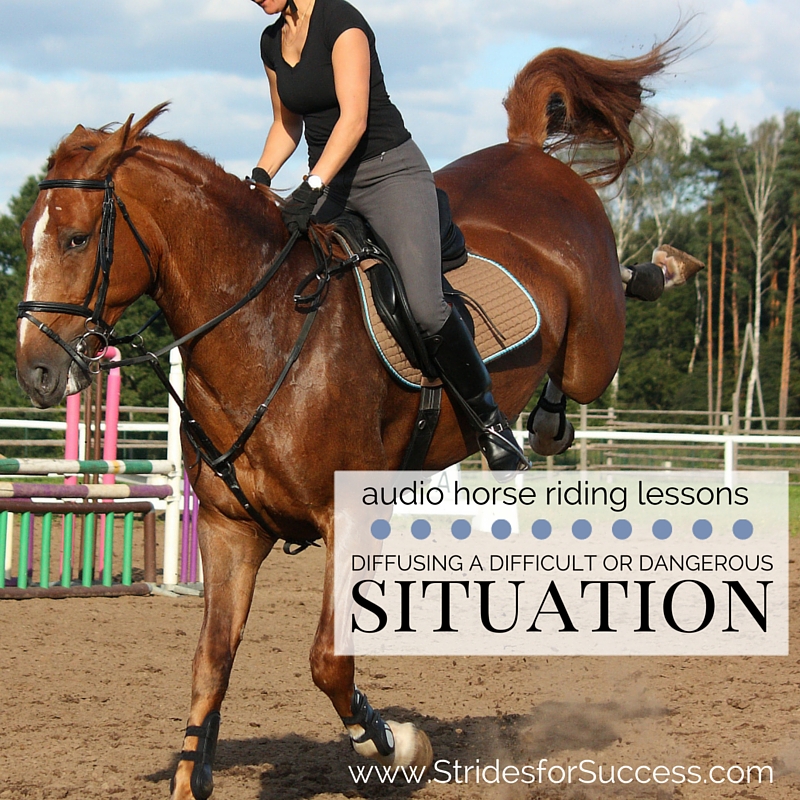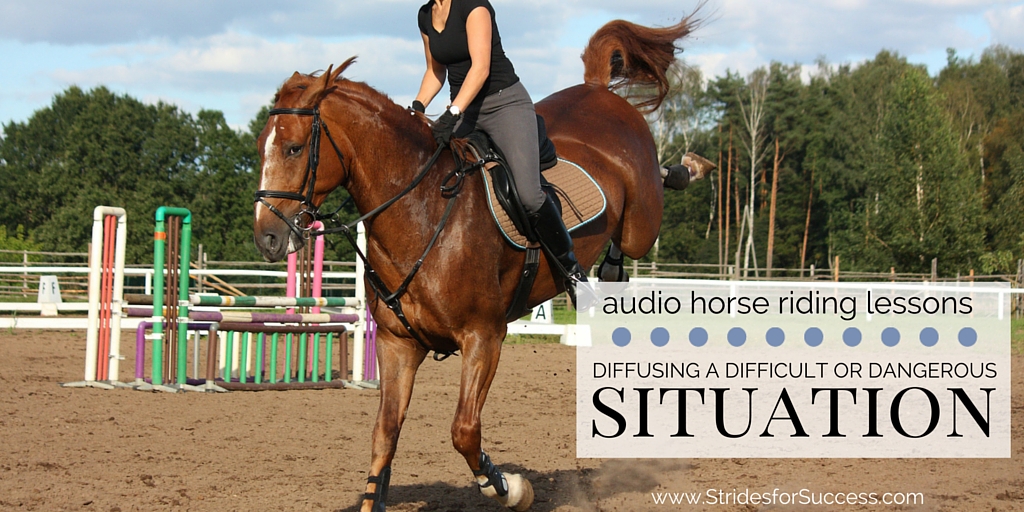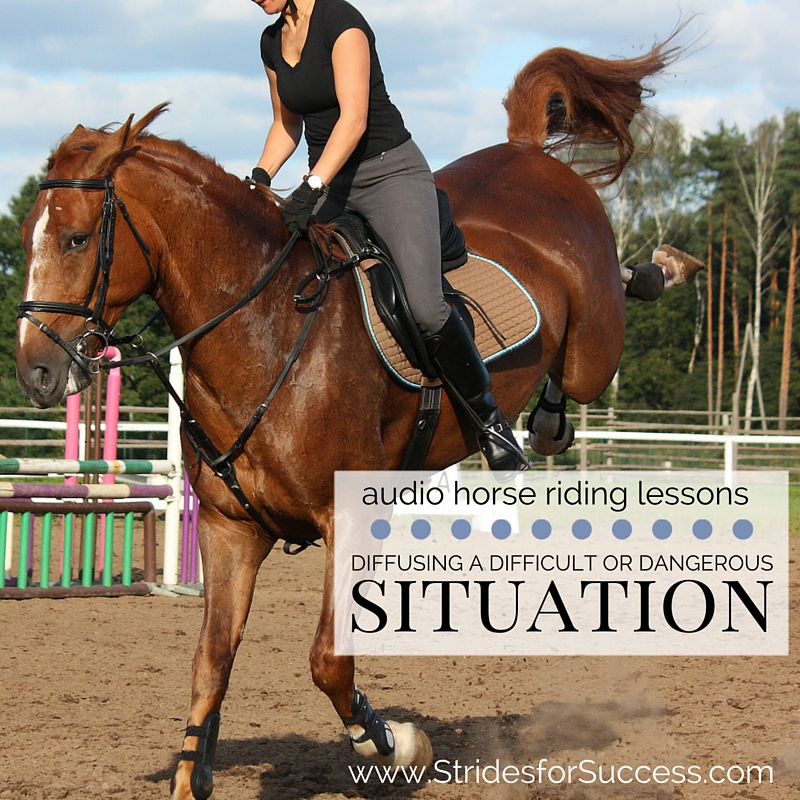Being an equestrian, it is a safe assumption to make that you love your horse. However, every now and again we will find ourselves in a situation that has the potential to turn dangerous very quickly, whether it be in the saddle or on the ground.
Depending on your personality and experience, how you deal with this type of situation can vary greatly. Some riders become angry or aggressive, others become anxious or nervous. While others simply ignore the behaviour and carry on…
Knowing what to do and how to act when a dangerous situation presents itself is vital to not only your own confidence around horses but also to your horse’s training and wellbeing.
Why Is He Being so Dangerous?!
Horses react in ‘dangerous’ ways for many different factors. The most obvious two are being frightened or in pain. However, there is a whole other multitude of reasons your horse may react in a way that can become dangerous or unsafe for both of you.
Some horses are excitable, others are aggressive. Some horses are reacting to a deep-seated instinct while others are simply following the rider’s lead. Factors such as your horse’s history or method which he was trained can play a part, his breeding, the food he is receiving, or perhaps an underlying health condition or disease.
Figuring out what is triggering his behaviour to begin with is paramount to how you will then react to or deal with the situation when it occurs again.
Look for patterns in the circumstances. Also, look at how he then reacts to the different methods that are being used to try to defuse the dangerous actions each time.
Working With Your Horse
Working with a nervous, frightened horse is quite different from working with an aggressive or ‘angry’ horse. The same is true of a horse that is excitable and high-spirited to a horse that is overly sensitive and easily stimulated.
Once you have figured out why your horse is reacting the way he is, the next question to ask yourself is: “Am I able to deal with this, or is this a job for a professional?”
Whatever route you choose, time and consistency will be the essential ingredients to learning how to defuse a difficult or dangerous situation correctly and safely, so that type of scenario happens less and less in your riding. Now, more often than not, you can compromise by hiring a trainer that will have experience of overcoming the type of challenge you are faced with.
Confidence, knowledge and self assuredness in your abilities is key to being able to deal with a dangerous situation, whether it being asserting authority, or being a human that your horse can trust
However, the sad fact remains that more often than not, these traits are usually lacking in most pleasure riders, through no fault of their own. And trying to mask uncertainty and fear is a tough act for anyone to pull off, let alone when in a dangerous situation with a 600kg horse! This is where working with an experienced professional is priceless.

Training Yourself First
I suggest taking a more methodical approach to training yourself to be ready and able to react closer to how you would like in these sorts of circumstances.
-
-
- Identify a ‘comfort zone’, where you feel safe and in control of the situation.
- Begin leaving this comfort zone, for short periods, each time you work with your horse.
- notice how your confidence and your horse’s confidence is growing
- Soon your ‘comfort zone’ will begin to expand; when this happens, push yourself to venture further away from the comfort zone, knowing that you can return at all times.
-
This can be a simple as riding in a round pen for a while or just touching your horse’s hindquarters briefly during grooming.
It will depend on what the situation is. However, growing and deepening the relationship between you and your horse will be key in being able to identify the ‘danger signs’ and defuse the situation before it escalates into a full-blown disaster.
Developing Your Abilities
You can also develop your fitness, your ability to balance, and your agility in the saddle by working some basic exercises into your schooling routine. Another way to increase your ability to react and adapt quickly in the saddle is by riding in the fields or on tracks and trails. Your horse will constantly have to readjust his footing and balance, which will require you to do the same…
However, if this is a problem, perhaps look at starting small in a small paddock or field to build confidence in either yourself and your horse.
Other Options…
Sadly, sometimes the challenge is too large or the reaction too ingrained. This can be in either you or your horse. When this happens it almost it can be very difficult to work through safely. If this is the case, selling your horse might be the best option. It is important to do this from a place of integrity and honesty.
Be mindful that the person who takes on the horse has the necessary tools to begin helping the horse; rather than the cycle repeating itself over again.
This might take time, or thinking outside the box, to find the right person. But you will feel better knowing you done all you can for the horse.
The number one thing to remember throughout is the safety of yourself, your horse, and those surrounding you.
Try to not get into situations where things can quickly escalate. I realize this is often easier said than done. However, if you can take the time to really get to know your horse (and yourself!) will definitely lower the risk factor.
Happy and safe riding
Lorna
Additional Resources on this Topic:-
-
-
- Why Enforcing Boundaries on the Ground will Improve Your Riding
- Boundaries; How They Work for You In Your Riding
- Online coaching and audio horse riding lessons for equestrians
- Groundwork for Riding
- Online community for equestrians working on their mindset & fitness
- Online Community for equestrians focusing on re-schooling horses (and ex-racehorses)
- The Daily Strides Podcast on iTunes
- The Daily Strides Podcast on Stitcher Radio
-



1 Comment